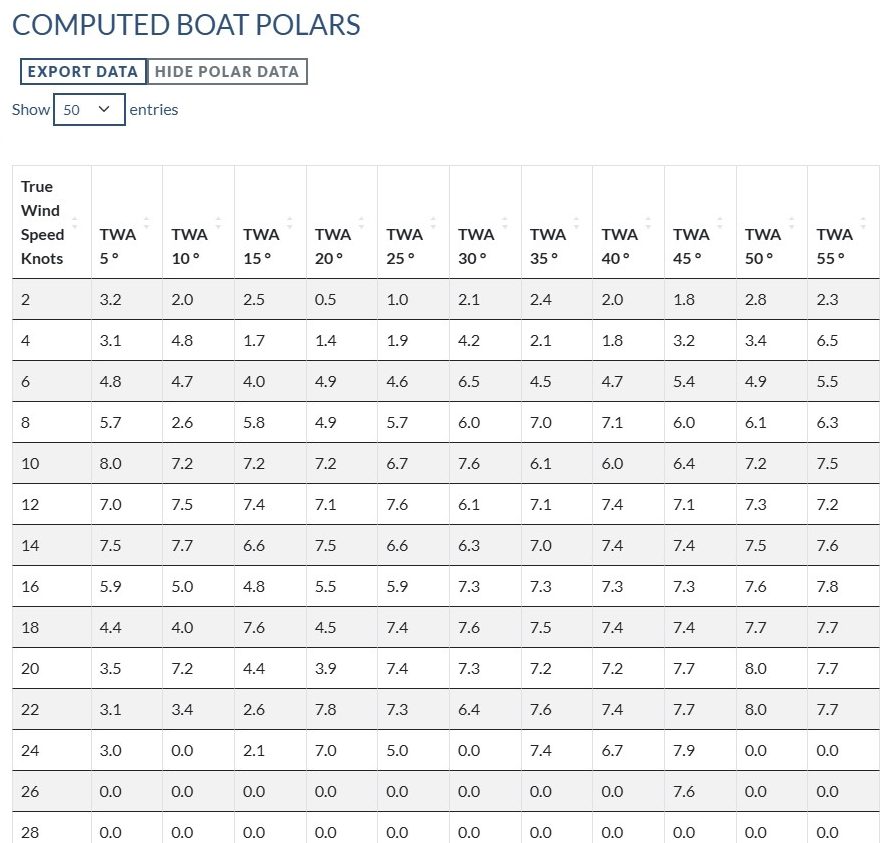Having a game plan that allows you to repeat a process is vital if you are going to improve your overall sailing performance.
We are proud to have been long-standing members of the London Corinthian Sailing Club – for longer than we care to admit. Over the years, the club has seen a surge in interest in offshore racing, and for the past three cycles, the club has entered a fleet into the RORC Fastnet qualifiers and race. This year, they’ll be on the start line once again for the Fastnet 100.
This year, our test boat Jengu, a J109, has benefitted immensely from the club’s training initiatives. Offshore-trained crew have joined Jengu for racing around the cans in the Solent.
To elevate racing performance, the club has brought in professional coaches to train members in what has become the “London Corinthian Way” of sailing. At the heart of this approach is a playbook that defines each manoeuvre on board, enabling crew members to jump on and off boats without missing a beat. Of course, this works best when everyone is racing First 40s or 40.7s – 40-footers with symmetric spinnakers. But it quickly became clear just how different it is to sail a J109 on a short course compared to racing a 40.7 offshore.
In the true Corinthian spirit, we’ve started a new playbook, and this is Part 1: How to Sail Jengu Upwind.
Boat Basics
Type: J109
IRC Rating (2025): 1.00 (down from 1.05 in 2023)
We’re running a single furling headsail under the heavy weather jib rule. This allows us to sail with one jib on the furler and carry a J4 onboard as well. All our non-overlapping headsails are factored into the handicap.
Important Note: We can only use 1 jib + 1 heavy weather jib per sailing day. Some events may allow changing sails between days, but others may require the same sails for an entire series.
J109 One Design racing we can use 3 from the full inventory. Though the furling rules no longer apply its more efficient to furl the headsail when using the spinnaker. Furling also reduces wear on the headsails luff tape.
Headsail Inventory
Primary Sails:
- C1 (Elvstrom, 2018): Light weather (up to 14 knots gusts)
- C1.5 (Elvstrom, 2023): Moderate conditions (gusting 15 knots)
- C3 (North, 2019): Up to 25 knots; fitted with roller battens for furling
- J4 (UK Sails): Heavy weather jib
Backup/Last Resort Sails:
- C3 (Elvstrom, 2019): Large patch, old
- J3 (North, 2012): Very old but still usable
We also have old overlapping headsails that are neither IRC nor class compliant.
Spinnakers
Crew can choose 3 spinnakers for any given race day. We have:
- 3 running spinnakers (even numbers: A2, A4, A6)
- 2 reaching spinnakers (odd numbers: A1.5, A5)
Examples:
- Round-the-cans: A2, A4, A5
- Coastal race: A1.5, A2, A5
Spinnaker System:
- Even = running
- Odd = reaching
- Higher number = heavier weather
Still no Code Zero… one day maybe. A5 is doing a good job for now.
Sail Handling: Setup & Tips
- Always insert battens in correct pockets.
- Avoid furling with horizontal battens in place (especially on Elvstrom sails)
- Use vertical pockets this year for furling.
- Roller battens. North Jibs with only horizontal pockets take roller battens. Not fibreglass ones!
Sail bags:
- All are labelled – tack end marked
- Flake sails along the luff to ease deployment
- Make sure the sails are in the bag the right way around.
Upwind Trim: Jib Cars & Mainsheet
Overall

Target Wind Angles
- Flat Water : Sail to Apparent Wind Angle in the 26-29 degree range.
- Rough water/waves : Sail to Apparent Wind Angle 29-33 degree range. Focus on keeping boat driving through the waves. Don’t slam the boat as that stalls the foils and sails.
Target Boat Speeds
- Flat Water : 6.5-7.5knots through the water depending on wind strength,
- Waves: 6.0-6.5 knots depending on wave pattern.
Note : Our target boat speeds are computer in real time using Rockit Analytics we can see how close to optimum our performance is. We can also see how much speed we manage to carry through the tack.
Heel angle:
- Sail the boat with a max 5% heel. This should give a positive feel to the helm.
- Move crew weight up and down to match.
- Make sure the trimmers are at the back of the crew stack on the rail and the bow at the front to reduce crew movement when tack.
- Chart table is the starboard side of the boat to encourage the Navigator to go below on starboard tack.
Trim angle :
Sail the boat bow down. The lighter the air the more important it is to raise the stern and depress the bow to minimise waterline length and drag. Aim for a smooth wake; bubbles in the wake equals turbulence which equates to drag..
Jib Cars:
- Set around 1.8 (marked on the cabin side)
Mainsail
- Mainsail Traveller needs to be fully to windward upwind to avoid backwinding mainsail and closing the slot when the Jib is sheeted in fully.
- Drop the traveller car to leeward prior to the tack to avoid having to drag the car up after the tack.
Adjusting Jib Cars:
- Easier with help: mast crew can push down on the sheet
- Adjust cars when not under load if necessary
- Be cautious with the control lines to avoid over-release
In-hauling:
- Helps create twist in the jib and keep the slot open
 Tacking: Headsail
Tacking: Headsail
Critical Focus: Timing, not flogging the headsail, weight on rail to accelerate the boat.
- Helm controls the tack and calls the release -> the helm can control the relative position of the jib across the boat in the same way that they do the mainsail on a hoist/drop.
- Lightest trimmer handles the release
- Heavier trimmer pulls sail across during the tack
- Slower turn is faster if it means the sail is sheeted in sooner and not allowed to flog.
- Use spreader marks for jib twist reference
Calls
- Navigator/Skipper confer about tack location.
- Skipper calls “Prepare to tack”.
- Helm “Ready About”
- Crew confirm loudly “ready” when in position.
- Helm “Tacking the boat”
Sequence:
- At Helms “Ready About”. Release trimmer moves to the active sheet winch.
- At Helms “Ready About”. Sheeting in trimmer moves to the inactive sheet winch and checks the sheet is correctly on the drum.
- Begin tack on helm’s “Tacking the boat” call
- Release person watches the jib and releases when the jib is about to back. Calls “Jib Free”
- Sheeting in trimmer pulls in as much sheet as they can. They should be able to get 95% tension on the sheet while the boat is head to wind in the tack.
- Sheet in post-tack with 95% tension. Call for Pit to Skirt if required.
- Sheet trimmer puts the winch handle in the drum and grinds to the 95% tension level if not already reached.
- Sheet trimmer applies in-hauler to fine-tune trim twist in the sail.
- Sheet trimmer grinds the remaining distance in. Watching sail trim and boat speed.
Crew Movement:
- Release trimmer stays near cockpit
- Navigator, Skipper, Mast and Pit rotate across cabin top
- Bow skirts sail if needed after tack
Efficiency Tips:
- Don’t leave winch handle in self-tailer during tack
- Keep crew on rail as long as possible to maintain speed
- Get weight up quickly post-tack to accelerate
Tacking: Mainsheet/Mainsail
- Helm calls “Ready About” . Mainsheet person checks lines will run free as required and responds when ready.
- Helm calls “Tack the Boat”. Mainsheet trimmer drops traveller to leeward before the tack completes. Once to leeward traveller cleat needs to be cleated to keep the mainsail car at the top of the track on the new tack.
- Helm Tacks the boat and Mainsheet person trims from the new windward side checking that there are no tangles/twists in the mainsheet as a result of the tack.
This is just the beginning. Our J109, Jengu, is teaching us a lot about short-course racing, and we’re committed to refining the Corinthian way for her unique characteristics.
Stay tuned for Part 2: Downwind Sailing.
If you want to know more about the London Corinthian Sailing Club you can more information here; www.lcsc.org.uk
 Tacking: Headsail
Tacking: Headsail